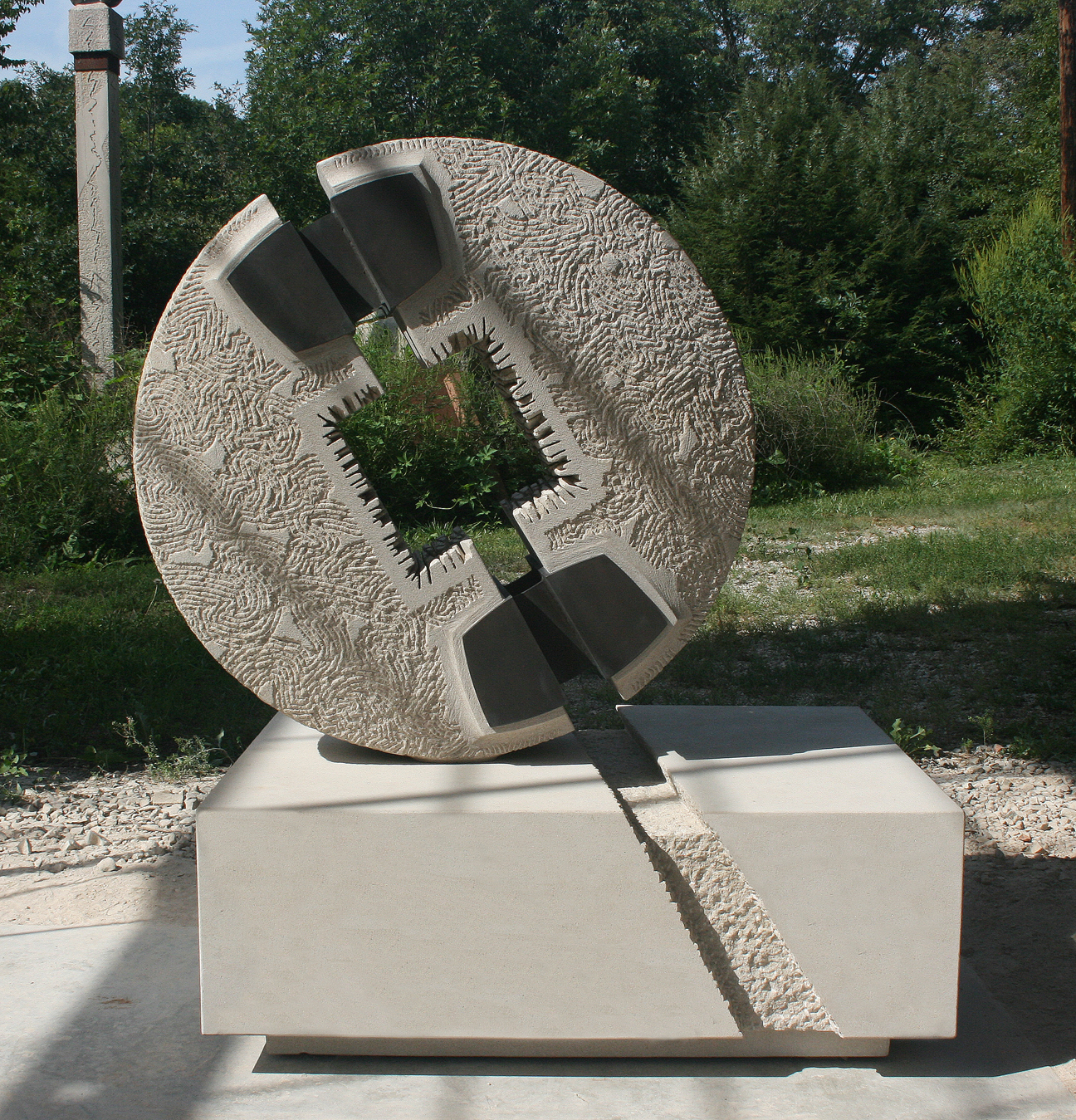

My name is Dale Enochs, I live in Bloomington Indiana in the heart of Indiana Limestone Country. This area is the source of the stone used in building the Empire State Building, the Federal Triangle and many courthouses throughout the US and elsewhere.
I believe that I knew that I was an artist when I was about five years old. My grandmother was what I call a “Victorian parlor artist.” She wrote poetry and drew Gibson Girl drawings. I wanted to be able to draw like my grandmother. I was the guy that got his only “A’s” in high school in art class. I went on to an art school in college and then to grad school at Indiana University.
After receiving a Masters of Fine Arts in ceramics I was dumped into the “real world.” I had no money for clay or a kiln or 3-D materials but I was surrounded by mountains of scrap limestone. I built a studio behind my house in Bloomington which was next to a railroad line. The raised rail bed behind my shop was scattered with limestone “rip-rap” that stabilized the embankment. At the time I would throw a chain around a four or five hundred pound chunk of stone, pull it out with my truck, drag it into my shop and beat it into submission. And so it began, my back yard became an out-door sculpture garden. The stone sculptures displaced the ceramic sculptures. That was over 30 years ago.
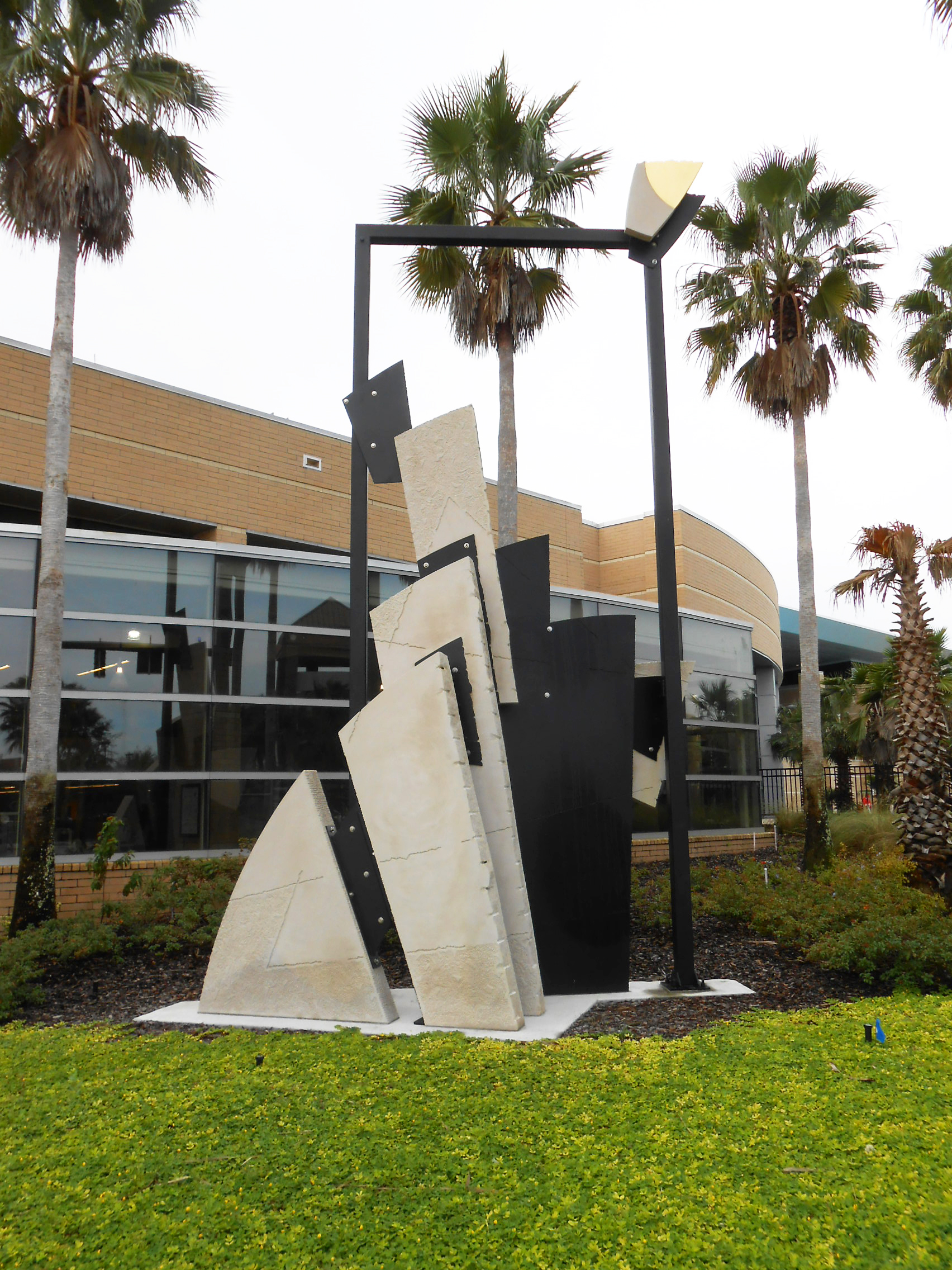 In the mid 80’s a friend told me that a retired Japanese professor was going to informally discuss Japanese rock gardens in his home. I was a fan of Noguchi and the Japanese aesthetic and this sounded good. During our get-togethers I soon learned that Dr. Kenneth Yasuda, who was born in California, had been interred at a detainment camp during WWII until he became an interpreter for the “Tojo trials” after the war. He then attended Tokyo University studying Japanese literature, Haiku poetry; Noh Theater, sumi-e painting and Japanese rock gardening. He became a Shingon priest, a founding member of The Gedatsu Church of America and went on to write a number of scholarly works on Haiku poetry and Noh Theater while teaching Japanese literature at Indiana University.
In the mid 80’s a friend told me that a retired Japanese professor was going to informally discuss Japanese rock gardens in his home. I was a fan of Noguchi and the Japanese aesthetic and this sounded good. During our get-togethers I soon learned that Dr. Kenneth Yasuda, who was born in California, had been interred at a detainment camp during WWII until he became an interpreter for the “Tojo trials” after the war. He then attended Tokyo University studying Japanese literature, Haiku poetry; Noh Theater, sumi-e painting and Japanese rock gardening. He became a Shingon priest, a founding member of The Gedatsu Church of America and went on to write a number of scholarly works on Haiku poetry and Noh Theater while teaching Japanese literature at Indiana University.
My informal lessons with Dr. Yasuda in Japanese rock gardening, among other things, lasted ten to twelve years.
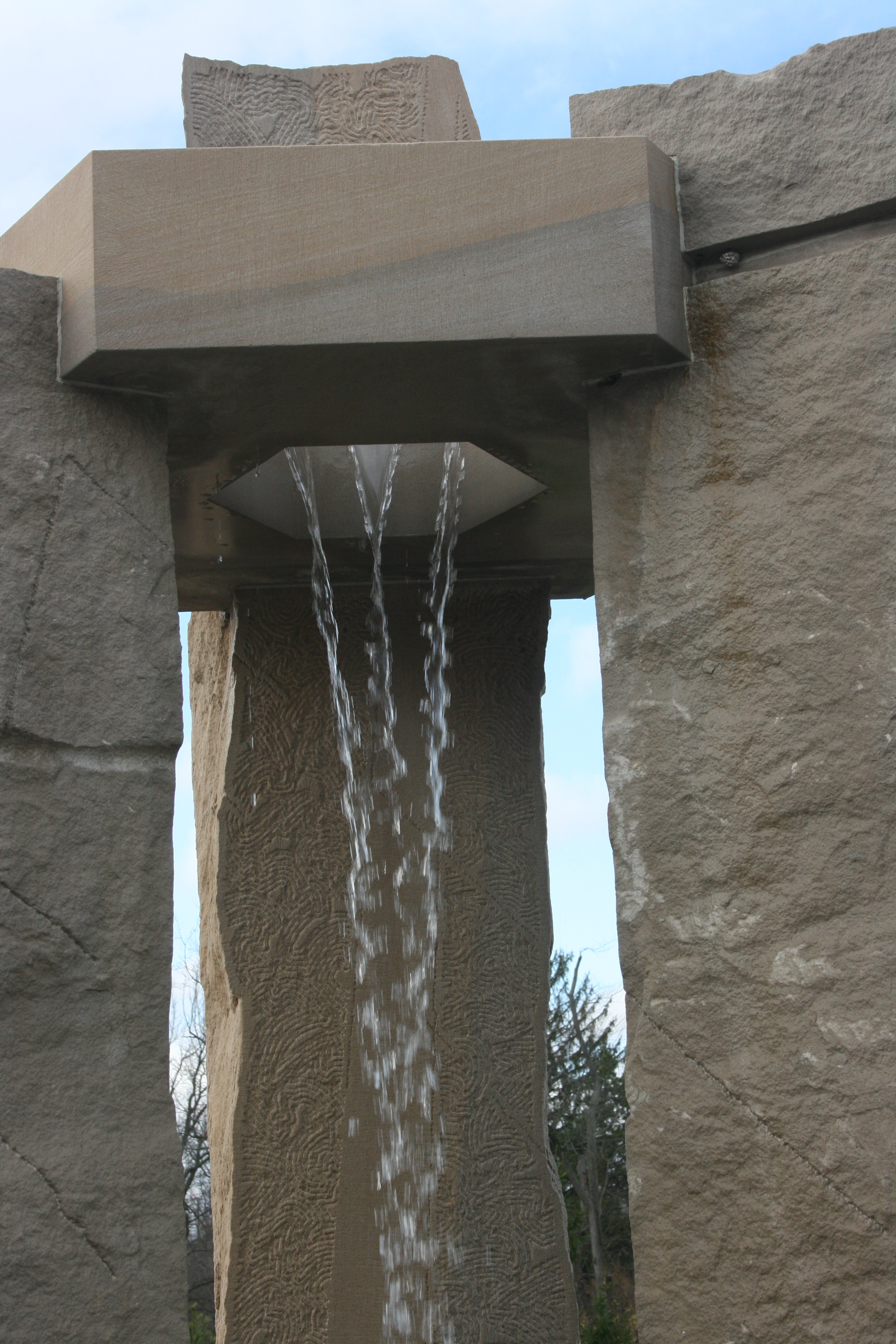
Over the years I have come to know the spirit of limestone. Limestone is a humble stone, it is not sexy, flamboyant or garish - I believe that it is indicative of the Midwest. The voice of limestone lies in its textural capabilities; those textures can hold a shadow and reflect light in ways that a veined or marbled stone cannot. It is an honest material, it will not “hold” a polish but neither can one be deceived by it becoming a pretty shiny rock. The material is soft and easy to work, but it is also durable and able to withstand both weather and time. I have come to greatly appreciate the stone in my back yard. Or perhaps, I’m the one in its backyard.
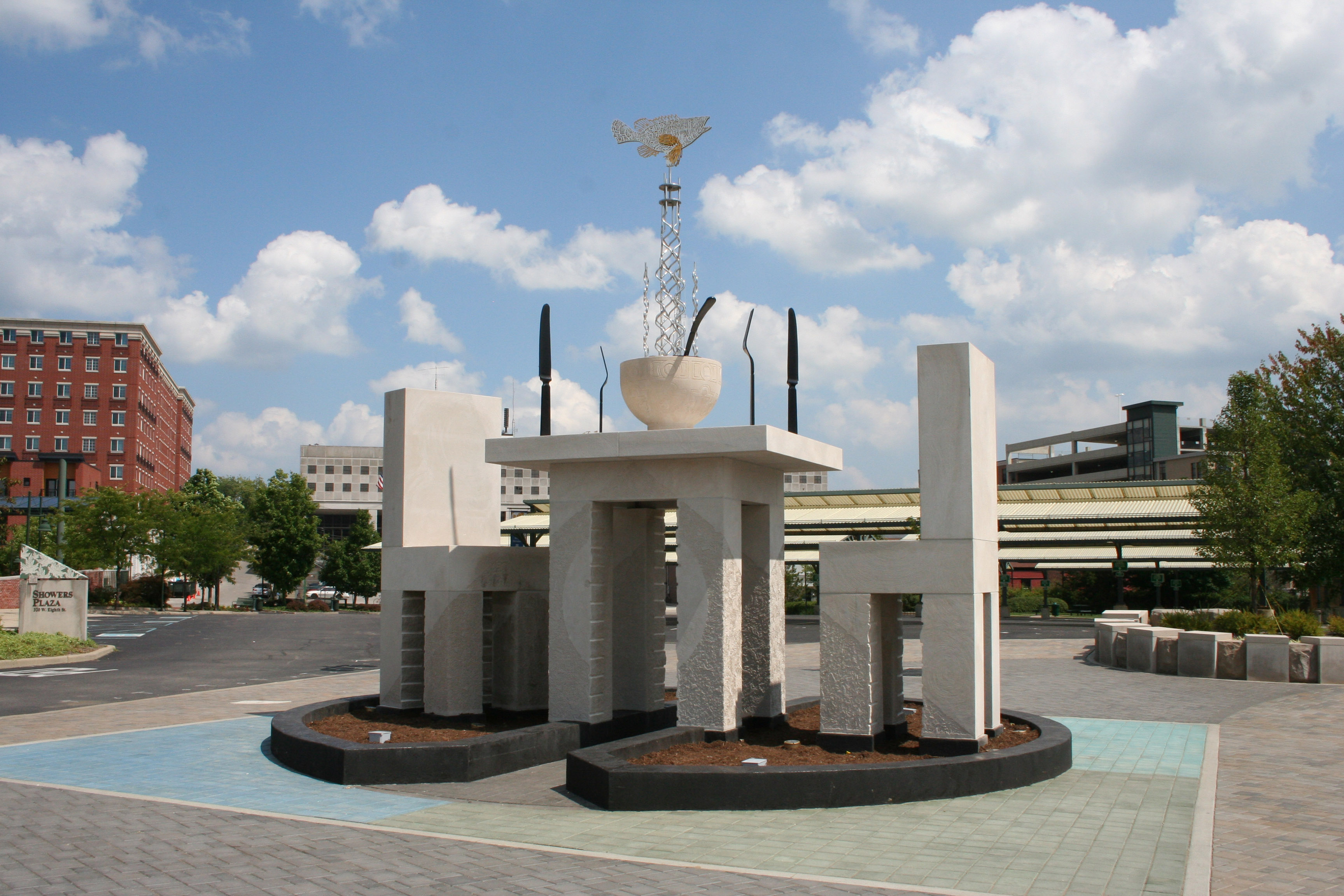
Early on I began adding contrasting materials to my limestone sculptures. Limestone is a light neutral color. At first I sought out iron seams in scrap stone using the natural reddish color in contrasting compositions. I then began using contrasting stones such as black or red marble in my limestone work. This then led to the use of metals, first copper and then bronze or steel. Eventually the metal in the compositions became attachment points and structural connectors. As the size of my work increased the metal elements became more important in that the work relies on the structural components of the pieces. The metal elements are designed to play an integral role, structurally, aesthetically and compositionally.
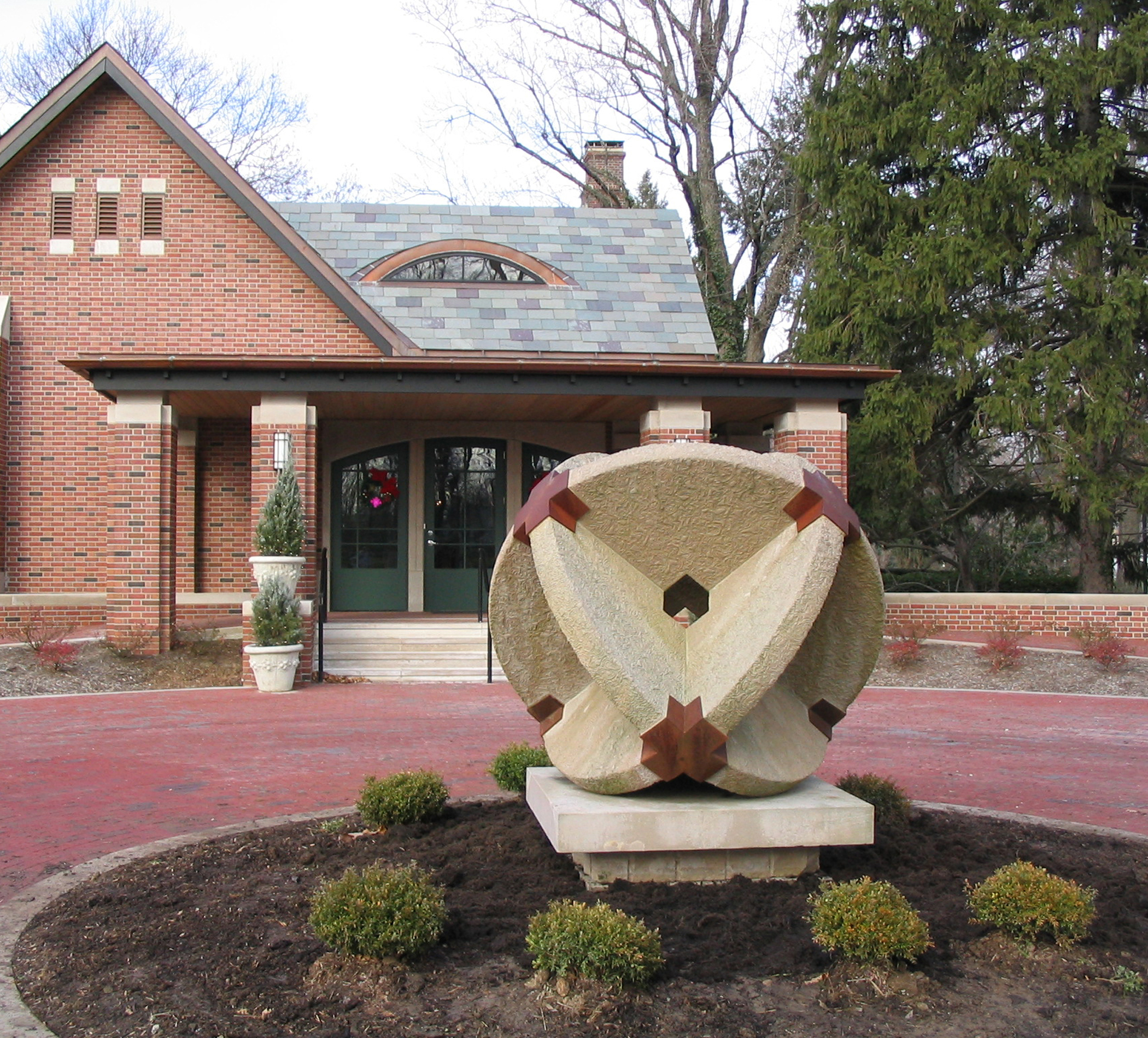 I enjoy the challenges of creating large scale work and I love doing site-specific work. I believe that outdoor work requires a scale that is appropriate to the setting. An intimate garden might require a “human scale” work appropriate to a secluded setting. In contrast, work within an urban setting with a relationship to surrounding architecture often requires a much larger piece.
I enjoy the challenges of creating large scale work and I love doing site-specific work. I believe that outdoor work requires a scale that is appropriate to the setting. An intimate garden might require a “human scale” work appropriate to a secluded setting. In contrast, work within an urban setting with a relationship to surrounding architecture often requires a much larger piece.
Scale is one of the many formal elements of art that I draw from. It is a tool used in building a composition of thoughts, ideas and emotions. Scale has its own voice, often one of strength, substance or power, which I often counterpoint with intimate detail, creating a “macrocosm, microcosm” composition. I feel that large scale work needs to have a dynamic presence when viewed from a distance while maintaining further visual interest as a viewer approaches the work. Hopefully the viewer becomes enveloped by the form while being drawn into the surface detail of the work.
I also do what I refer to as “independent work.” Independent work is often smaller; it comes about from personal explorations and experiments in aesthetics, concepts and emotional reactions. It is the results of these explorations that end up being utilized in larger site-specific and public works.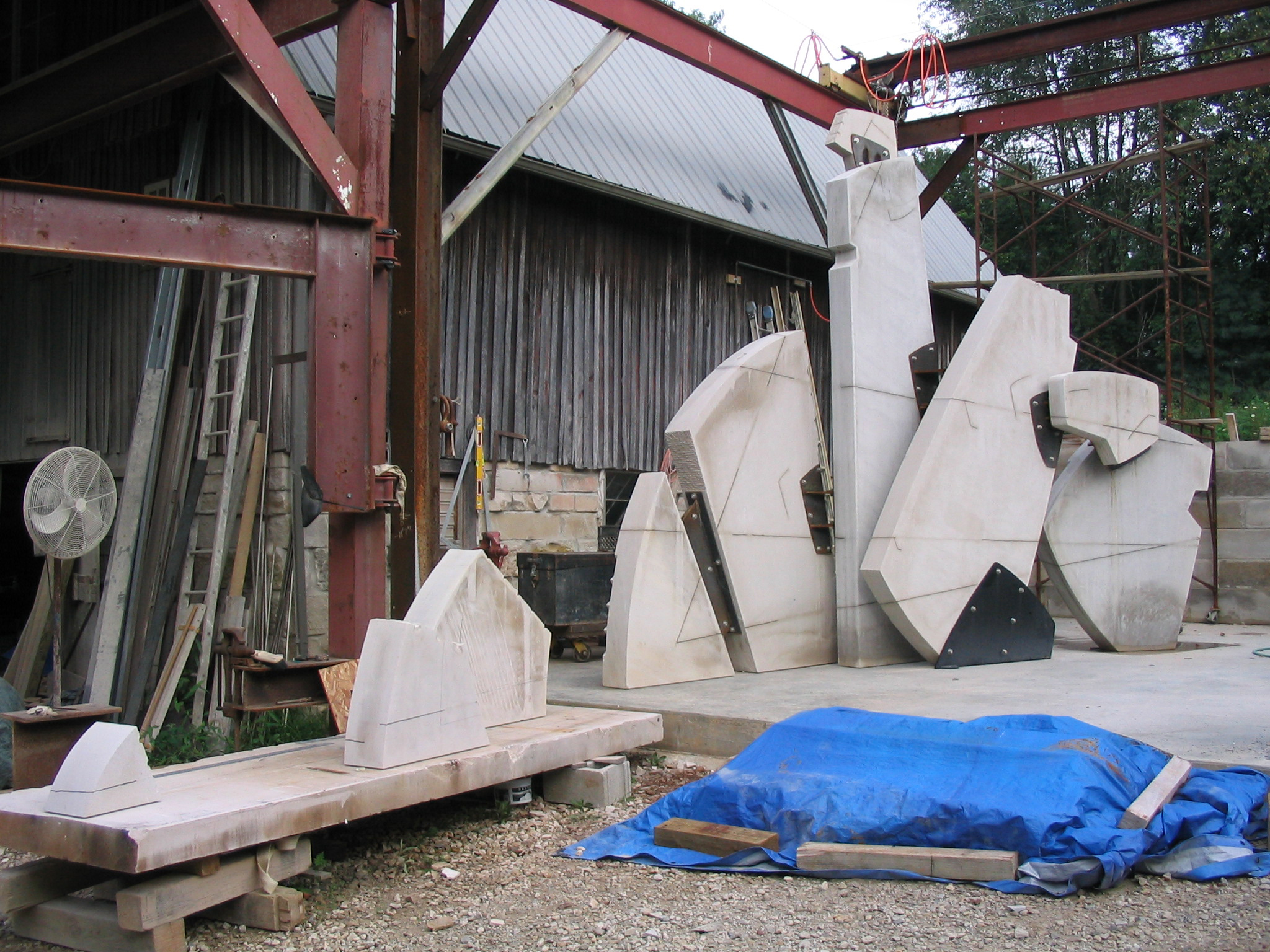
And then, somewhere in the middle of all of these activities I also do woodcut prints, but that’s another topic.
With the stone portion of my work, I cut, carve and fit all pieces of the sculpture with whatever tools are necessary to get to that point. I liken this part to “stretching a canvas.” Then I usually work all portions of the final surface by hand. This means that textual elements are carved by hand or even scratched with hand held carbide tools in order to enliven the surface. I feel that I cannot achieve the life, idiosyncrasies and movement of the surface without discovering it “by hand.”
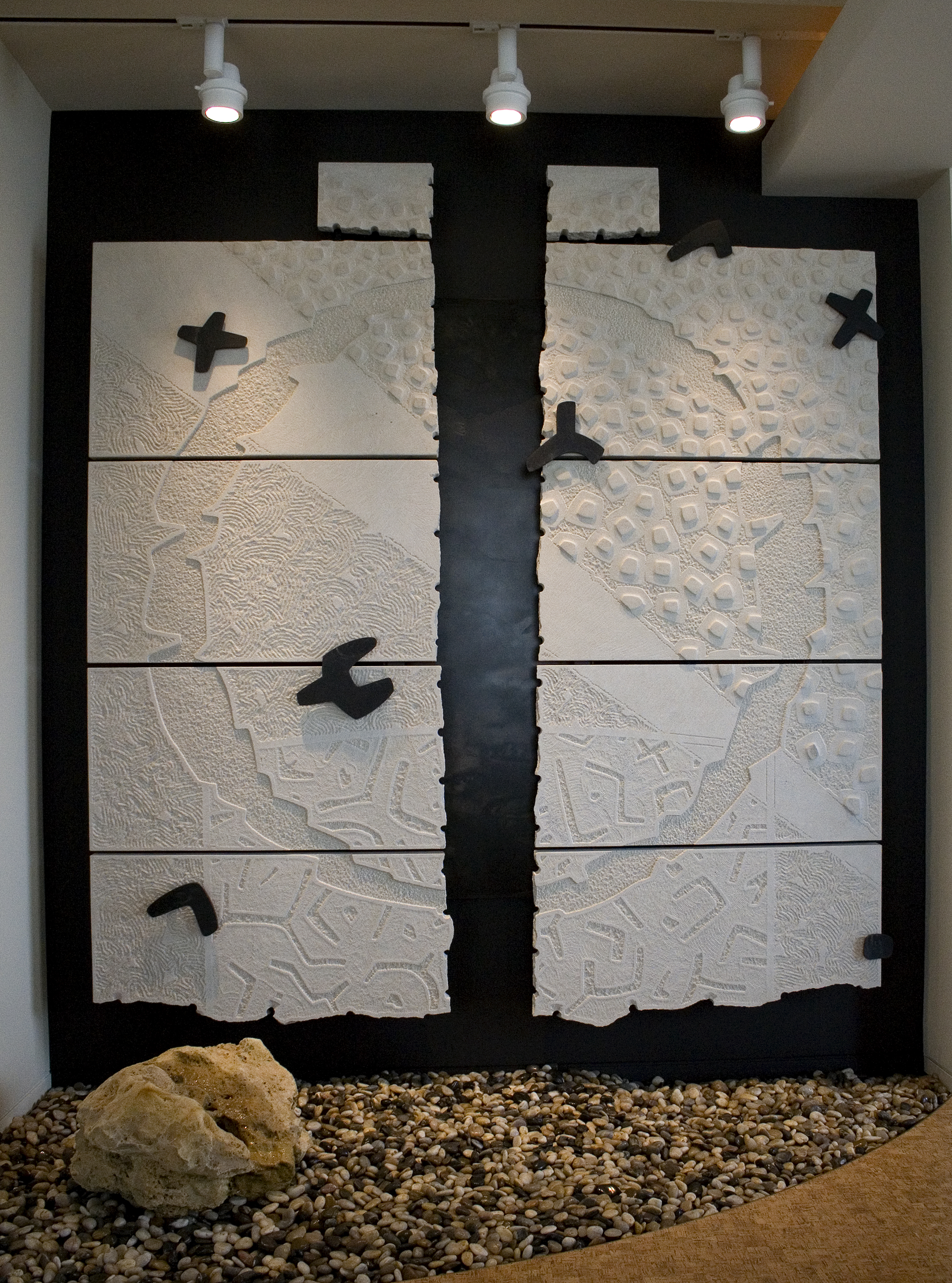 Fabricating the metal portions of my work is another process. Depending on the piece, I sometimes cut metal elements and weld brackets or attachments appropriate for the composition. Alternately, I will draw a shape; scan it into a raster image and then turn it into a vector. I then have the metal cut with a laser cutter or a water jet cutting system. Generally speaking the cad system-cut pieces need to be more precise.
Fabricating the metal portions of my work is another process. Depending on the piece, I sometimes cut metal elements and weld brackets or attachments appropriate for the composition. Alternately, I will draw a shape; scan it into a raster image and then turn it into a vector. I then have the metal cut with a laser cutter or a water jet cutting system. Generally speaking the cad system-cut pieces need to be more precise.
All of the aforementioned processes have come together after years of thinking and doing. Within these years of working essentially by myself, I have developed my own direction, thoughts and philosophy regarding art. For me, as an artist, the word “art” is a verb. “Arting” is a process, art is an action word. Arting is thinking, experimenting, discovering and making. And when this process comes to fruition there is an object, and, from my perspective, (the perspective of the artist) that object is an artifact of this process. I learn something through the experience and it is then time to apply that knowledge to
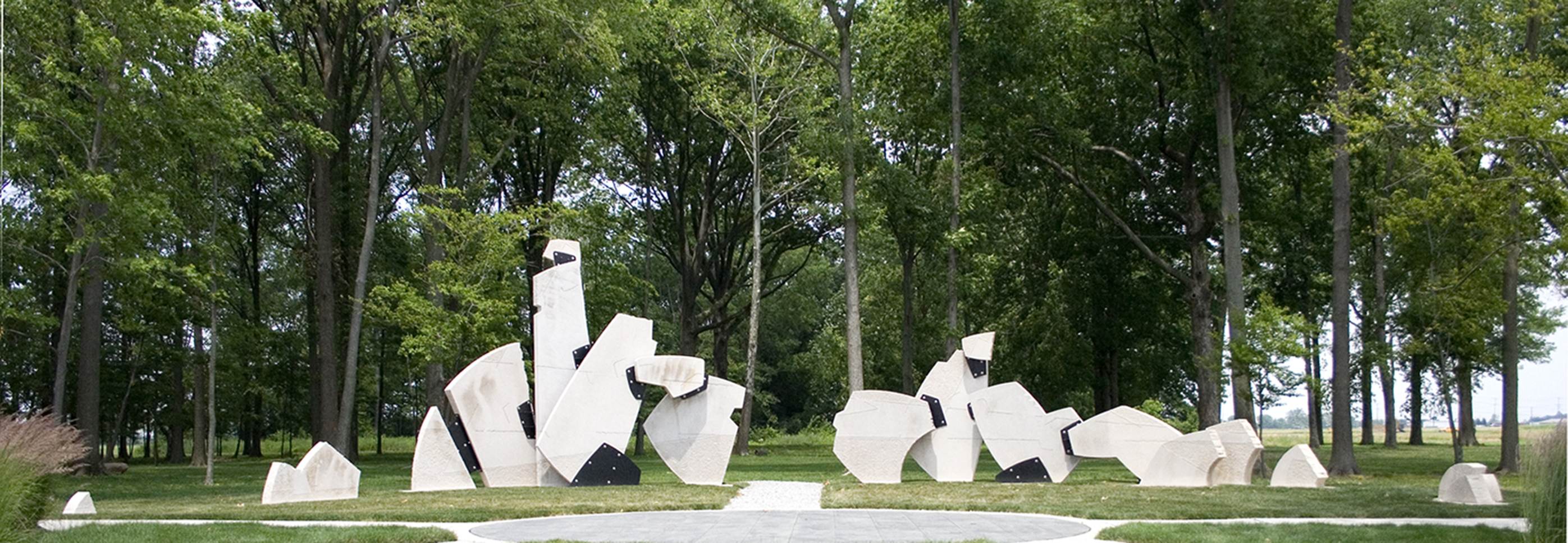
I feel extremely fortunate to be able to do what I do. I also appreciate this opportunity to share my work with Sculpture NorthWest. Thank you. the next experiment. It is my hope that the results of these experiments speak to others in some pertinent way.
Dale Enochs, 8635 S. Ketcham Rd., Bloomington, IN 47403
Ph. 812 824-8181, This email address is being protected from spambots. You need JavaScript enabled to view it., www.daleenochs.com
